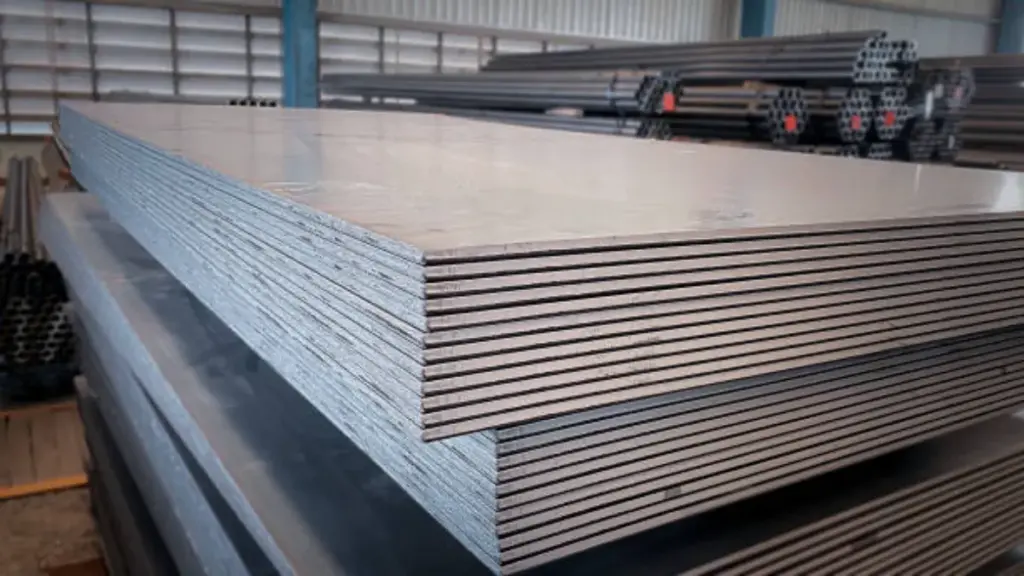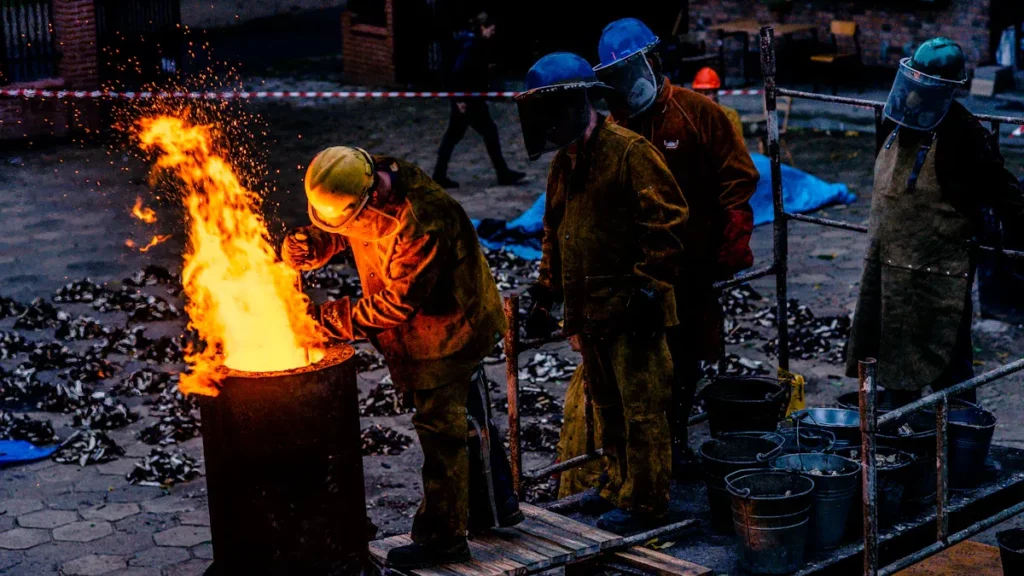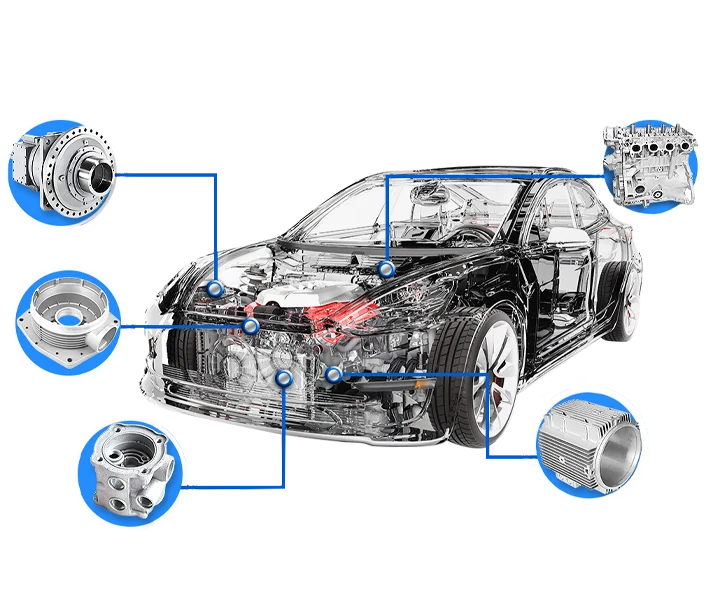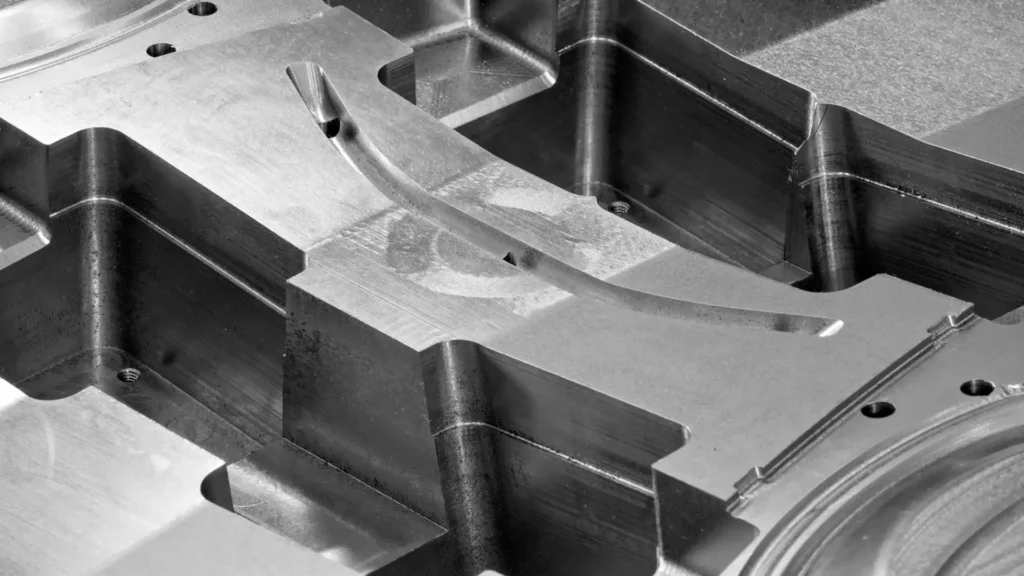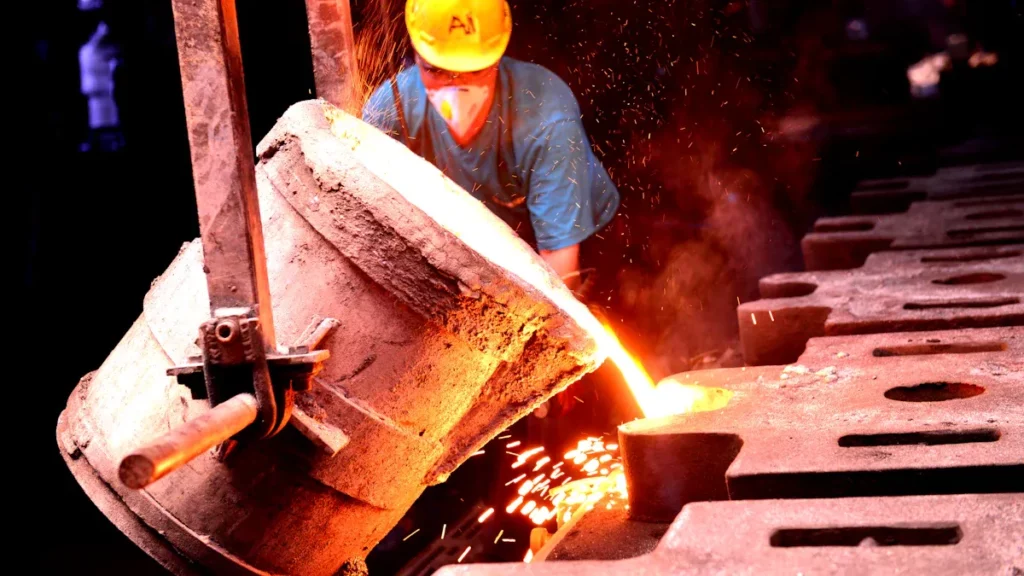
مصدر الصورة: بيكسلز
تصميم عالي الضغط يموت تصميم القالب: تتضمن أفضل الممارسات لمكونات السيارات حقن المعادن المنصهرة في تجويف القالب في ضغوط مرتفعة, إنتاج مكونات بدقة استثنائية وجودة السطح. يلعب تصميم القالب دورًا محوريًا في ضمان كفاءة التصنيع ودقة الأبعاد. تتيح القوالب الفعالة إنشاء هندسة معقدة مع تقليل العيوب والنفايات المادية. سوق الصب العالي الضغط العالمي, من المتوقع أن تصل $55.34 مليار من قبل 2030, يسلط الضوء على الطلب المتزايد على تصميمات العفن المتقدمة. دمج أفضل الممارسات في تصميم القالب العالي الضغط يعزز سرعة الإنتاج, يقلل التكاليف, ويضمن الأداء المتفوق, خاصة في تطبيقات السيارات.
تصميم عالي الضغط يموت تصميم القالب: أفضل الممارسات لمكونات السيارات
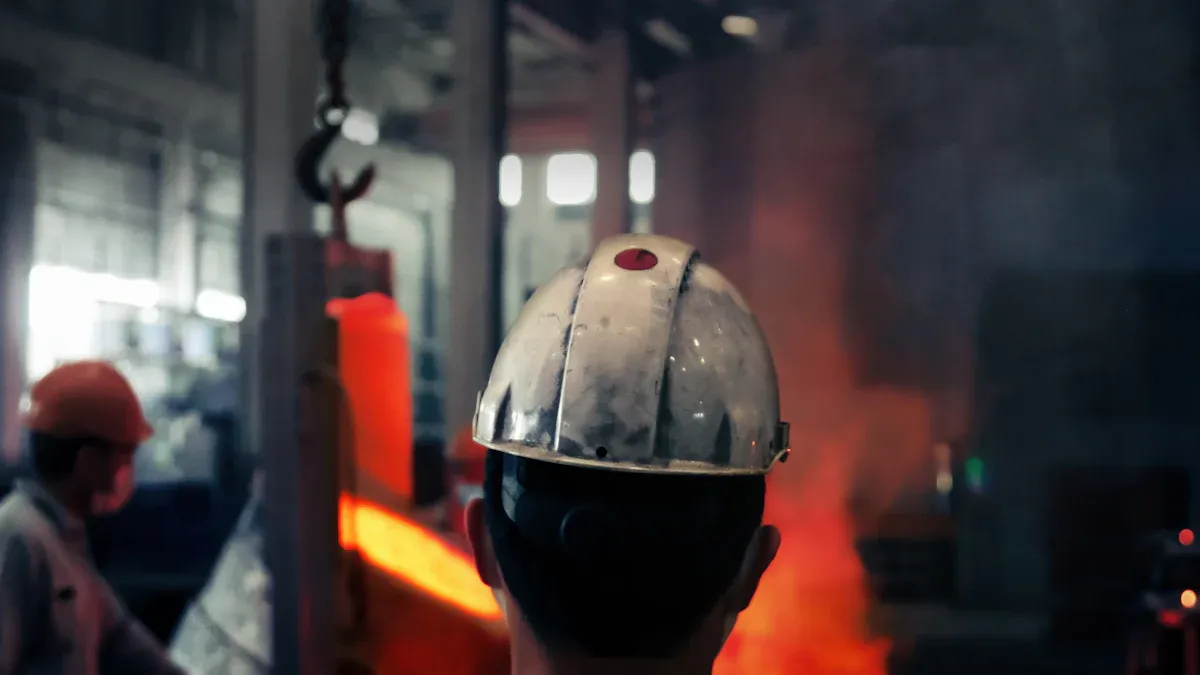
فهم أساسيات الصب العالي الضغط
التعريف والمبادئ الأساسية للعملية
يتضمن صب القالب العالي الضغط إجبار المعادن المنصهرة على تجويف قالب فولاذي تحت ضغط كبير. هذه العملية تضمن التصلب السريع, مما يؤدي إلى مكونات ذات أبعاد دقيقة وأسطح ناعمة. ضغوط مرتفعة تتراوح من 30 ل 70 تضمن MPA أن يملأ المعدن المنصهر كل تفاصيل معقدة من القالب. تدعم هذه الطريقة إنتاج الأشكال الهندسية المعقدة مع الحد الأدنى من نفايات المواد.
تشمل المبادئ الأساسية لالتقاط الضغوط العالية السرعة, دقة, والتكرار. التبريد السريع داخل القالب يعزز الاستقرار الأبعاد مع تقليل أوقات الدورة. عملية الحقن المتحكم فيها تقلل من المسامية, ضمان خصائص ميكانيكية متفوقة في المنتج النهائي. هذه المبادئ تجعل العملية مثالية للصناعات التي تتطلب مكونات عالية الجودة.
المكونات الرئيسية وأدوارها في هذه العملية
تسهم العديد من المكونات الرئيسية في نجاح صب الضغوط العالية. يموت, يتكون من النواة والتجويف, يشكل المعدن المنصهر في الشكل المطلوب. تطلق دبابيس القاذف الجزء المتصل من القالب دون أضرار. تنظم قنوات التبريد درجة الحرارة, منع العيوب الناجمة عن التصلب غير المتكافئ. تسمح أنظمة التهوية بالغازات المحاصرة بالهروب, تقليل المسامية وتحسين الانتهاء من السطح.
تلعب أنظمة الحقن دورًا مهمًا في توصيل المعادن المنصهرة عند ضغط وسرعة ثابتة. يعتمد اختيار الغرفة الساخنة أو أنظمة الغرفة الباردة على نوع السبائك المستخدمة. يعمل كل مكون في وئام لتحقيق النتائج المثلى في تصميم قالب القالب العالي الضغط.
أهمية تصميم العفن في تطبيقات السيارات
تحقيق الدقة والتكرار في مكونات السيارات
تتطلب مكونات السيارات دقة واتساقًا استثنائيين. يضمن تصميم القالب الذي يموت عالي الضغط أن كل جزء يلبي التحمل الصارم الأبعاد. تصميم العفن الصحيح يلغي الاختلافات بين دورات الإنتاج, تحقيق التكرار الضروري للإنتاج الضخم. الجودة المتسقة تقلل من مشكلات التجميع وتعزز أداء السيارة.
يؤكد مصممو العفن ذوي الخبرة على أهمية عمليات المحاكاة الدقيقة خلال مرحلة التصميم. يتنبأ البرامج المتقدمة بعيوب محتملة, تمكين التعديلات قبل بدء الإنتاج. وفق مصممي العفن ذوي الخبرة, “تجربة في تصميم العفن يترجم إلى عدد أقل من المراجعات, إطلاق أسرع الإنتاج, وأداء المنتج المتفوق.” يضمن هذا النهج الدقة في تصنيع السيارات.
معالجة التحديات الخاصة بتصنيع السيارات
يمثل تصنيع السيارات تحديات فريدة, بما في ذلك الحاجة إلى مكونات خفيفة الوزن ولكن متينة. يتناول تصميم قالب القالب العالي الضغط هذه التحديات من خلال تمكين استخدام مواد مثل الألومنيوم والزنك. توفر هذه السبائك مقاومة القوة والتآكل مع تقليل وزن السيارة بشكل عام.
تشكل الإدارة الحرارية تحديًا آخر في تطبيقات السيارات. أنظمة التبريد الفعالة داخل القالب تمنع ارتفاع درجة الحرارة, ضمان جودة متسقة. أنظمة التهوية المناسبة تتناول المشكلات المتعلقة بالغازات المحاصرة, التي يمكن أن تسوية النزاهة الهيكلية. تصميم العفن مصمم خصيصًا لمتطلبات السيارات يتغلب على هذه العقبات بكفاءة.
مزايا الصب العالي للضغط لمكونات السيارات
خيارات مواد خفيفة الوزن ودائمة
يدعم صب القالب العالي الضغط استخدام مواد خفيفة الوزن مثل سبائك الألومنيوم والمغنيسيوم. هذه المواد تقلل من وزن السيارة, تحسين كفاءة استهلاك الوقود والأداء. على الرغم من كثافتها المنخفضة, توفر هذه السبائك قوة ومتانة ممتازة, تلبية المطالب الصارمة لتطبيقات السيارات.
توفر سبائك الزنك أيضًا مزايا من حيث الدقة ومقاومة التآكل. قدرتهم على إنشاء مكونات رقيقة الجدران تجعلها مناسبة للتصميمات المعقدة. يعزز براعة خيارات المواد جاذبية الصب العالي للضغط لمصنعي السيارات.
فعالية التكلفة وقابلية التوسع للإنتاج الضخم
يتيح تصميم قالب القالب العالي الضغط إنتاجًا فعالًا من حيث التكلفة من خلال نفايات المواد المنخفضة وأوقات دورة أقصر. تدعم العملية التصنيع العالي الحجم, مما يجعلها مثالية لمكونات السيارات. تعزز قوالب التجويف المتعدد قابلية التوسع من خلال إنتاج أجزاء متعددة في وقت واحد.
تضمن متانة القوالب وفورات طويلة الأجل في التكاليف. الصيانة المنتظمة تمتد عمر العفن, تقليل مصاريف التوقف عن العمل والاستبدال. يستفيد مصنعو السيارات من مزيج من الكفاءة, قابلية التوسع, والقدرة على تحمل التكاليف التي يقدمها صب الاضغط العالي.
أساسيات تصميم العفن
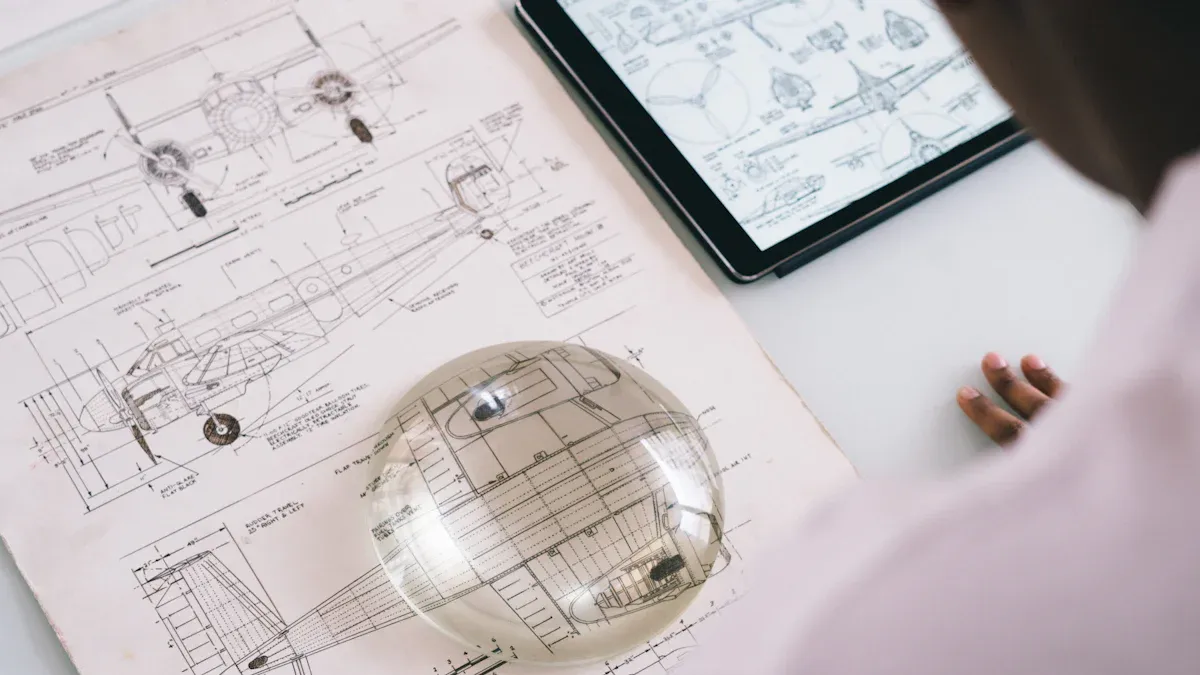
المبادئ الرئيسية لتصميم العفن
أهمية اختيار مواد العفن المناسبة
يحدد اختيار المواد المتانة والأداء العفن. تتطلب قوالب الصب عالية الضغط على مواد تحمل درجات الحرارة والضغوط الشديدة. سبائك الصلب, مثل H13 و P20, تستخدم عادة بسبب الموصلية الحرارية العالية ومقاومة التآكل. توفر قوالب الألومنيوم خصائص خفيفة الوزن ولكنها قد تفتقر إلى القوة اللازمة للاستخدام لفترة طويلة.
تعزز العلاجات الكيميائية أسطح العفن لمنع الالتزام المعدني أثناء الصب. المعالجة الكيميائية لقوالب صب المعادن يسلط الضوء على أهمية عوامل إطلاق العفن في صب سبائك الألومنيوم. يضمن اختيار المواد الصحيح دورات الإنتاج السلس ويقلل من متطلبات الصيانة.
دور أنظمة الإدارة الحرارية والتبريد
تمنع الإدارة الحرارية العيوب الناجمة عن التبريد غير المتكافئ. تنظم قنوات التبريد درجة حرارة العفن, ضمان تصلب متسق للمعادن المنصهرة. أنظمة التبريد الفعالة تقلل من أوقات الدورة وتحسن دقة الأبعاد. التحكم غير السليم في درجة الحرارة يؤدي إلى تشققات, المسامية, أو تزييف في مكونات الممثلين.
ال تحسين عملية الصب في الضغط العالي تؤكد براءة الاختراع على تصميمات العفن المعيارية مع نفاثات تبريد نشطة. تعمل هذه الأنظمة على تحسين توزيع درجة الحرارة عبر جسم القالب. تعمل حلول التبريد المتقدمة على تعزيز كفاءة الإنتاج وتقليل الأضرار التي لحقت بقطع الغيار.
أنواع القوالب في صب القالب
إحدى التجويف مقابل. قوالب متعددة التجويف: إيجابيات وسلبيات
تنتج قوالب التجويف الواحد مكونًا واحدًا لكل دورة. يوفر هذا التصميم البساطة والدقة لإنتاج الحجم المنخفض. تخلق قوالب التجويف المتعدد مكونات متعددة في وقت واحد, زيادة الإنتاج وخفض التكاليف. لكن, تتطلب القوالب متعددة التجويف تصاميم معقدة واستثمار أولي أعلى.
غالبًا ما يفضل مصنعي السيارات قوالب متعددة التجويف للإنتاج الضخم. تصميم عالي الضغط يموت تصميم القالب: تستفيد أفضل الممارسات لمكونات السيارات من قابلية التوسع التي توفرها أنظمة التجويف المتعدد. يختار اختيار العفن المناسب أهداف الإنتاج مع قيود الميزانية.
الغرفة الساخنة مقابل. قوالب الغرفة الباردة: التطبيقات والاختلافات
تعتبر قوالب الحجرة الساخنة مثالية لسبائك النقطة المنخفضة مثل الزنك والمغنيسيوم. يسمح الفرن المدمج بالحقن السريع للمعادن المنصهرة. تناسب قوالب الغرفة الباردة سبائك النقطة عالية النقطة مثل الألومنيوم. يقلل الفرن الخارجي من فقدان الحرارة أثناء نقل المعادن.
كل نوع قالب يعالج المواد والتطبيقات المحددة. تصميم عالي الضغط يموت تصميم القالب: أفضل الممارسات لمكونات السيارات تستخدم قوالب الغرفة الباردة لقطع غيار الألمنيوم خفيفة الوزن. يضمن فهم الاختلافات العفن الأداء الأمثل في تصنيع السيارات.
مكونات العفن الأساسية
الأساسية والتجويف: وظائفهم واعتبارات التصميم
يحدد النواة والتجويف شكل مكون الممثلين. يشكل التجويف السطح الخارجي, بينما يخلق النواة ميزات داخلية مثل الثقوب أو الاستراحة. الدقة في تصميم الأساس والتجويف يضمن دقة الأبعاد ويقلل من متطلبات ما بعد المعالجة.
تتطلب الهندسة المعقدة مقاربات مبتكرة. قوالب الاستثمار المعقدة يسلط الضوء على تقنيات إنشاء عمليات التقويض والتصاميم المعقدة. تصميم عالي الضغط يموت تصميم القالب: أفضل الممارسات لمكونات السيارات تستفيد من التصميمات المتقدمة والتجويف لتطبيقات السيارات.
دبابيس القاذف, قنوات التبريد, وأنظمة تنفيس
إطلاق دبابيس القاذف أجزاء من القالب من القالب. يمنع وضع الدبوس الصحيح الأضرار أثناء الطرد. تحافظ قنوات التبريد على درجات حرارة عفن متسقة, تعزيز جودة المنتج. تسمح أنظمة التهوية بالغازات المحاصرة بالهروب, تقليل المسامية وتحسين الانتهاء من السطح.
تصاميم تنفيس مبتكرة تعمل على تحسين الكفاءة. ال تحسين عملية الصب في الضغط العالي تقدم براءة الاختراع قوالب معيارية مع طائرات سائل مضغوطة لإزالة جزء. تصميم عالي الضغط يموت تصميم القالب: تستفيد أفضل الممارسات لمكونات السيارات من هذه التطورات في تكنولوجيا القوالب.
اعتبارات تصميم العفن المتقدمة
اختيار المواد للقوالب
المواد الشائعة المستخدمة في بناء العفن
يتطلب بناء العفن مواد تحمل الظروف القاسية. الصلب الصلب الصلب هو خيار شائع بسبب متانته ومقاومة التآكل. تعالج هذه المادة الأسطح الكاشطة بشكل فعال وتحافظ على الاستقرار الأبعاد تحت الضغط العالي. يقدم الألمنيوم خيارًا آخر للحصول على طلبات أقل تطلبًا. قوالب الألومنيوم تقلل من تكاليف الإنتاج وتبسيط عمليات التصنيع.
توفر سبائك الصلب مثل H13 و P20 فوائد إضافية. تجمع هذه المواد بين القوة والتوصيل الحراري, ضمان تبديد حرارة فعال أثناء الصب. قوالب الحديد الزهر مناسبة للأجزاء الأكبر أو السبائك مع نقاط انصهار أعلى, مثل النحاس أو البرونز. تخدم كل مادة أغراض محددة بناءً على متطلبات عملية الصب.
العوامل التي تؤثر على اختيار المواد, بما في ذلك خصائص السبائك
يعتمد اختيار المواد على عدة عوامل, بما في ذلك خصائص السبائك وأهداف الإنتاج. تتطلب سبائك النقطة العالية النقطة قوالب ذات مقاومة حرارة فائقة. تتفوق قوالب الصلب في هذه السيناريوهات من خلال الحفاظ على السلامة الهيكلية في ظل درجات حرارة مرتفعة. قوالب الألومنيوم تعمل بشكل جيد مع سبائك النقطة المنخفضة مثل الزنك أو المغنيسيوم, تقديم المرونة للتصميمات المعقدة.
يؤثر حجم الإنتاج أيضًا على اختيار المواد. فوائد تصنيع عالية الحجم من مواد متينة مثل الصلب الصلبة. قد يعطي الإنتاج ذو الحجم المنخفض أولوية وفورات في التكاليف من خلال قوالب الألومنيوم. يعقد تعقيد المكون مادة العفن. هندسية معقدة تتطلب مواد تدعم الآلات الدقيقة والحفاظ على الدقة على دورات متعددة.
تصميم لقابلية التصنيع (سوق دبي المالي)
ضمان سهولة الإنتاج والتجميع
تصميم لقابلية التصنيع (سوق دبي المالي) يبسط عمليات الإنتاج والتجميع. يجب أن تستوعب تصميمات العفن تدفق المعادن السلس لمنع العيوب. أنظمة البوابات المناسبة تضمن أن المعدن المنصهر يصل إلى كل تجويف دون اضطراب. التصميمات الفعالة تقلل من أوقات الدورة وتحسين الإنتاجية الإجمالية.
يتطلب تجميع المكون محاذاة دقيقة للميزات. يجب أن تفسر تصميمات العفن التحمل الذي يمكّن التكامل السلس مع أجزاء أخرى. ميزات مثل مسودة الزوايا تسهل طرد مكونات الممثلين السهلة. التصميمات المبسطة تعزز القدرة على التصنيع وتقليل جهود ما بعد المعالجة.
تقليل العيوب, يضيع, والتوقف عن الإنتاج
تبدأ الوقاية من العيوب بتصميم العفن الأمثل. قنوات التبريد الموحدة تمنع التصلب غير المتكافئ, تقليل الشقوق أو الشقوق. أنظمة تنفيس القضاء على الغازات المحاصرة, تحسين الانتهاء من السطح والنزاهة الهيكلية. التنسيب السليم لدبابيس القاذف يقلل من الضرر أثناء إزالة الجزء.
يتضمن تقليل النفايات استخدامًا فعالًا للمواد. قوالب متعددة التجويف تزيد من الإخراج مع تقليل المواد الزائدة إلى الحد الأدنى. تسمح تصميمات العفن المعيارية بدائل سريعة, تقليل وقت التوقف أثناء الصيانة. تصميم عالي الضغط يموت تصميم القالب: تستفيد أفضل الممارسات لمكونات السيارات من الاستراتيجيات التي تعزز الكفاءة وتقليل الانقطاعات.
المحاكاة والاختبار
دور CAD وبرامج المحاكاة في تصميم العفن
تصميم بمساعدة الكمبيوتر (كندي) تلعب برامج المحاكاة أدوارًا حرجة في تطوير العفن. أدوات CAD إنشاء نماذج ثلاثية الأبعاد مفصلة من القوالب, ضمان الدقة في كل بعد. يتنبأ برنامج المحاكاة بقضايا محتملة مثل انحراف الهواء أو ملء غير مكتمل. إن الكشف المبكر عن العيوب يقلل من المراجعات المكلفة أثناء الإنتاج.
تقوم المحاكاة الحرارية بتقييم أداء نظام التبريد. تحدد هذه الأدوات النقاط الساخنة وتحسين توزيع درجة الحرارة عبر القالب. يضمن تحليل التدفق أن يملأ المعدن المنصهر كل تجويف بدون عيوب. تصميم عالي الضغط يموت تصميم القالب: أفضل الممارسات لمكونات السيارات تستفيد من البرامج المتقدمة لتحقيق نتائج فائقة.
أهمية اختبار النموذج الأولي والتحسينات التكرارية
اختبار النموذج الأولي يتحقق من تصاميم القوالب قبل الإنتاج على نطاق واسع. تكشف النماذج المادية عن القضايا التي قد تتجاهلها المحاكاة. يضمن الاختبار قوالب تلبية معايير الأداء في ظل ظروف العالم الحقيقي. تعديلات بناء على نتائج الاختبار صقل التصميم للوظائف المثلى.
تحسينات التكرار تعزز عمر العفن والكفاءة. تحدد التقييمات المنتظمة أنماط التآكل أو الإخفاقات المحتملة. يضمن التحسين المستمر أن تظل القوالب موثوقة على الاستخدام الممتد. تصميم عالي الضغط يموت تصميم القالب: تؤكد أفضل الممارسات لمكونات السيارات على قيمة الاختبار والتحسين المستمر.
نصائح عملية لتصميم العفن الفعال
أفضل الممارسات في صيانة العفن
فحص منتظم, تنظيف, والتدابير الوقائية
تبدأ صيانة العفن مع عمليات التفتيش الروتينية. شيكات متكررة تحديد التآكل, الشقوق, أو اختلال في مكونات العفن. يمنع الكشف المبكر العيوب في الأجزاء المصبوب ويقلل من الإصلاحات المكلفة. التنظيف يزيل البقايا من المعادن المنصهرة, ضمان الأسطح السلسة والأداء المتسق. يحمي عوامل التنظيف المتخصصة مواد العفن من التآكل والتراكم.
التدابير الوقائية تعزز موثوقية العفن. تزييت يقلل من الاحتكاك بين الأجزاء المتحركة, تقليل التآكل بمرور الوقت. الطلاء الواقي من درع القوالب من الإجهاد الحراري والتفاعلات الكيميائية أثناء الصب. يضمن الصيانة المجدولة إنتاجًا دون انقطاع ويمتد عمر القوالب.
استراتيجيات لتمديد عمر العفن والحفاظ على الأداء
ظروف التخزين المناسبة تحافظ على سلامة العفن. البيئات الخاضعة للرقابة مع درجات حرارة مستقرة تمنع التزييف أو التشوه. مناطق التخزين الخالية من الرطوبة تحمي القوالب من الصدأ والأكسدة. علاجات مضادة للتآكل تطبق بانتظام أكثر حماية أسطح العفن.
ترقيات إلى مكونات العفن تعمل على تحسين المتانة. دبابيس القاذفة المعززة تحمل الاستخدام المتكرر دون الانحناء أو كسر. تنظم أنظمة التبريد المتقدمة درجة الحرارة بشكل أكثر فعالية, تقليل التعب الحراري. تسمح التصميمات المعيارية باستبدال سريع للأجزاء البالية, تقليل وقت التوقف والحفاظ على كفاءة الإنتاج.
استراتيجيات تحسين التكلفة
موازنة الجودة والميزانية في تصميم العفن
يتطلب تحسين التكلفة توازنًا بين جودة المواد وقيود الميزانية. توفر مواد عالية الجودة مثل الصلب المتصل وفورات طويلة الأجل من خلال المتانة وتقليل الصيانة. توفر قوالب الألومنيوم خيارًا فعالًا من حيث التكلفة للإنتاج المنخفض الحجم أو تطبيقات أقل تطلبًا. يعتمد الاختيار على أهداف الإنتاج ومتطلبات السبائك.
تصاميم العفن الفعالة تقلل من النفايات. قوالب متعددة التجويف تزيد من الإخراج لكل دورة, خفض تكاليف المواد. تصاميم مبسطة تقلل من تعقيد الآلات, تقليل الاستثمار الأولي. يتوافق التخطيط المناسب لتصميم العفن مع الأهداف المالية مع الحفاظ على معايير الأداء.
تقليل وقت التوقف وتحسين كفاءة الإنتاج
يتضمن تقليل وقت التوقف الصيانة الاستباقية. عمليات التفتيش المنتظمة والإصلاحات في الوقت المناسب تمنع حالات فشل غير متوقعة. تتيح تصميمات العفن المعيارية بدائل الأجزاء السريعة, تقليل التأخير أثناء الإنتاج. مهام الصيانة لتبسيط الأتمتة, ضمان صيانة ثابتة دون تدخل يدوي.
تحسين أنظمة التبريد تعزز الكفاءة. يمنع توزيع درجة الحرارة الموحدة عيوب مثل التزييف أو المسامية, خفض معدلات الرفض. تضمن أنظمة البوابات المحسنة تدفق المعادن السلس, تقصير أوقات دورة. تصميم عالي الضغط يموت تصميم القالب: تستفيد أفضل الممارسات لمكونات السيارات من الاستراتيجيات التي تعطي الأولوية لوقت التشغيل والإنتاجية.
دراسات الحالة والتطبيقات في العالم الحقيقي
أمثلة على تصميمات العفن الناجحة في صناعة السيارات
تعرض صناعة السيارات تصميمات مبتكرة للعفن. تدعم قوالب الألومنيوم خفيفة الوزن إنتاج مكونات المركبات الموفرة للوقود. تخلق قوالب الزنك أجزاء معقدة بدقة استثنائية, مثل علب التروس والموصلات. تتيح قوالب التجويف المتعدد الإنتاج الضخم للأجزاء المتطابقة, تلبية الطلب المرتفع بجودة ثابتة.
التطورات التاريخية تبرز تأثير الابتكار المادي. اعتماد المواد البلاستيكية في 1970S والثمانينيات ثورة في تصنيع السيارات. استبدال الأجزاء البلاستيكية المقبولة بالحقن المكونات المعدنية الثقيلة, تقليل وزن السيارة و تحسين كفاءة استهلاك الوقود. تصميم عالي الضغط يموت تصميم القالب: تستمر أفضل الممارسات لمكونات السيارات في التطور مع ابتكارات مماثلة.
الدروس المستفادة والرؤى من ممارسات الصناعة
تؤكد ممارسات الصناعة على أهمية القدرة على التكيف. تمثل تصميمات القوالب الناجحة لخصائص المواد, حجم الإنتاج, وتعقيد المكون. يضمن التعاون بين المهندسين والمصنعين أن القوالب تلبي احتياجات التطبيق المحددة. تحدد أدوات المحاكاة العيوب المحتملة, تمكين التحسينات قبل بدء الإنتاج.
لا تزال الاستدامة محورًا رئيسيًا. مواد خفيفة الوزن مثل المغنيسيوم والألمنيوم تقلل من الانبعاثات عن طريق تحسين كفاءة السيارة. تصاميم العفن الفعالة تقلل من النفايات, دعم التصنيع الواعي للبيئة. تصميم عالي الضغط يموت تصميم القالب: تعكس أفضل الممارسات لمكونات السيارات التزام الصناعة بالابتكار والاستدامة.
يلعب تصميم قالب القالب العالي الضغط دورًا أساسيًا في إنشاء مكونات السيارات الدقيقة والفعالة. الجمع بين الخبرة التقنية مع رؤى عملية يضمن أداء العفن الأمثل ويقلل من الأخطاء المكلفة. أدوات متقدمة مثل برامج CAD والتعاون مع المهندسين يعززون الجودة الصنع وجودة المنتج. تطبيق هذه المبادئ يسرع في الجداول الزمنية للإنتاج ويحسن موثوقية المكون. يمكن أن يؤدي استكشاف المزيد من فرص التعلم في تصميم العفن إلى تحسين المهارات وتوسيع المعرفة. توفر الاستشارة المهنية أو التدريب المتقدم إرشادات قيمة لتحقيق التميز في تصميم القالب العالي الضغط.

